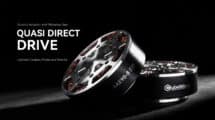Once upon a time, exoskeletons and wearable robots all used to look the same. Exoskeletons had large bulky metal frames, heavy actuators and a backpack filled with batteries and controllers. Newer bio-inspired robotics, however have broken the mold. There are now devices that use wires, cables, compressed air, springs and other soft actuators to achieve movement. Some of the once bulky frames are being replaced by plastics, inflatables or removed all together.
Rather than moving forward and perfecting the same basic design, substantial amount of exoskeleton research has started moving backwards, re-inventing what is really necessary to achieve physical human body augmentation. Numerous research labs have gone as far back as basic biology to look for inspirations for new powered exoskeleton designs. Below are two presentations on bio-inspired robotics with applications to exoskeletons:
Robotics – Kyu-Jin Cho, Seoul National University from Kavli Frontiers of Science on Vimeo.
This is an online presentation on soft bio-inspired robotics by Kyo-Jin Cho, Professor at Seoul National University. He showcases several examples of soft bio-inspired robots from other researchers and then explains a few of his own Biorobotics Laboratory team’s designs. The presentation is meant to be an introduction to soft robotics and the design and research process that is specific to “bio-inspired.” He contends that this methodology should be considered when solving problems that have more variable parameters or environments than rigid designs are often able to handle.
One of the advantages soft robotics shares with nature is greater degrees of freedom. This goes along with soft robotics’ increased adaptability. On the other hand, soft robotics so far are unable to achieve the same precision and power of rigid designs. Kyo-Jin Cho’s team showcases these pros and cons in their Scalable Buckling Hand, a grasper inspired by the inch-worm’s proleg mechanism. This is a good example of his “bio-inspired” design process. A feature in nature is found to have incredible capabilities, and researchers then try to analyze and mimic the unique movement with robotics. Soft robotics goes a step further by being able to more accurately mimic the degrees of freedom of the natural movement. I was surprised that modeling of the motion was done after building a prototype based on the motion found in nature instead of the other way around. The grasper proved to achieve the aforementioned advantages. It can grasp everyday objects of various shapes and sizes.
Yong-Lae Park : Bio-Inspired Soft Robotics: New Ways of Sensing and Actuation
In this video, Yong-Lae Park, Assistant Professor, Carnegie Mellon, Robotics Institute, talks about soft sensors developed using liquid metal inside thin tubules. As the tubes are stretched or compressed, the resistivity of the conductive liquid also changes. Park then continues the seminar with an improvement on pneumatic artificial muscles and imbedding soft sensors in them similar to human muscles and the living tissue sensors around them. The talk then continues with wearable devices that use the prototype soft muscles and sensors starting with a soft ankle exosuit (feature image).
Many aspects of soft robotics can be applied to the future of exoskeleton design to better improve functionality, practicality, and cost-effectiveness. The traits of soft robotics make them lighter with fewer parts to manufacture, which could make exoskeleton devices for home use both more practical to wear and more practical for a consumer market. Though seemingly unorthodox to design, soft bio-inspired robotics are really a closer imitation of most motions in nature. The prosthetic hand design by Kyu-Jin Cho’s lab very closely follows the actual mechanisms of the finger actuation in a human hand. I believe the take-away from these presentations as a bioengineering student is the bio-inspired process for design as well as to consider a “soft” solution under the right circumstances.








Add Comment